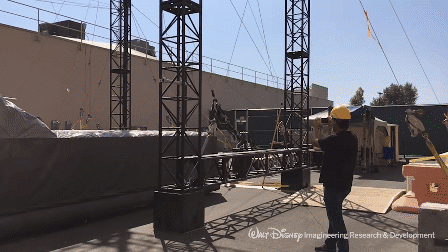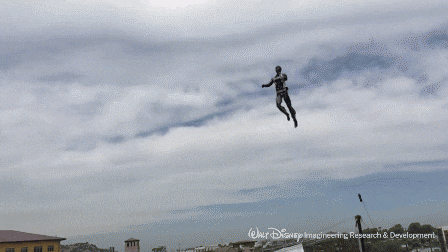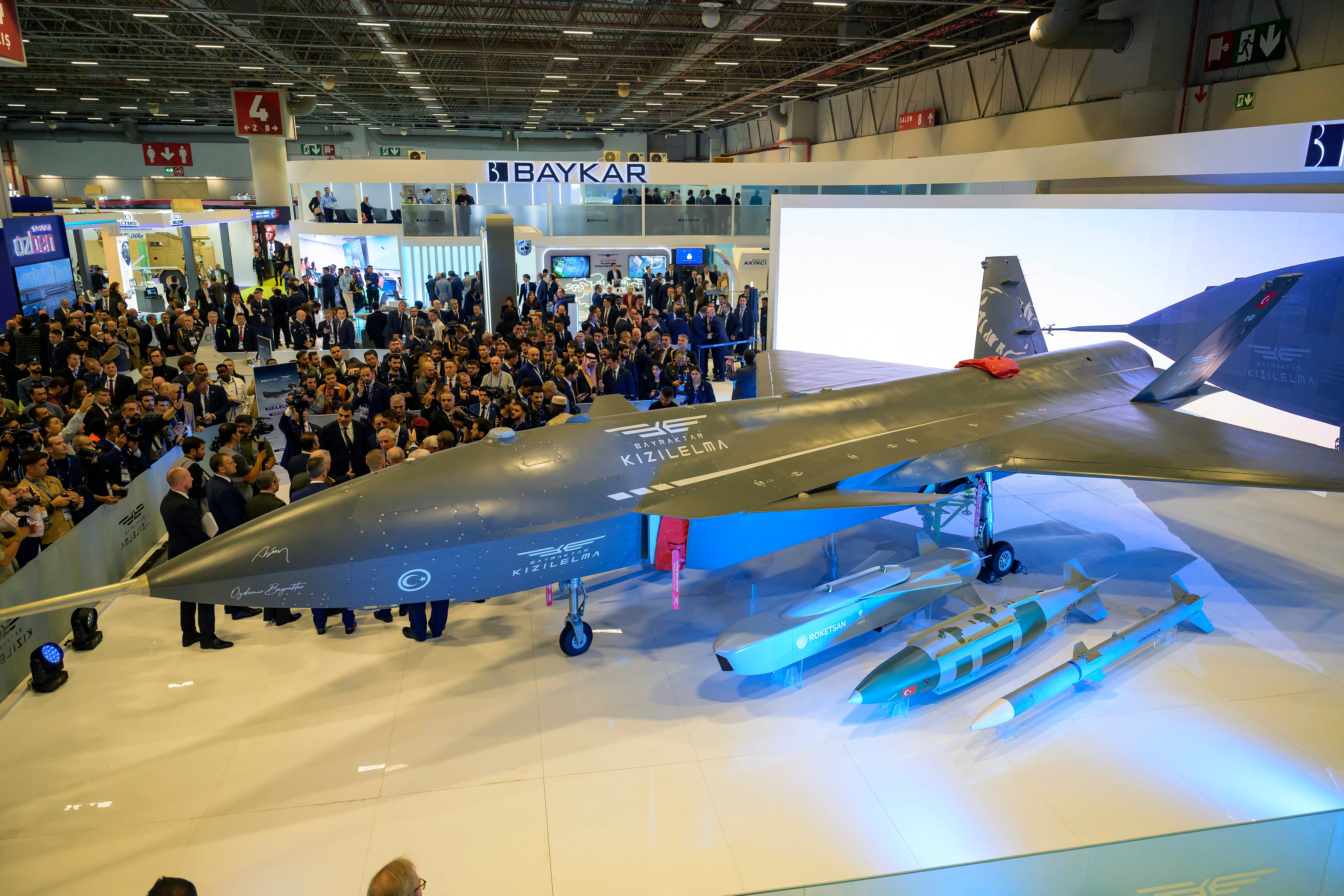A parachute is a simple tool: an expanse of cloth, unfurled while falling, that turns a careening object into a descending one. The offensive deployment of parachutes, carrying armies from midair to surprise envelopment on the ground, is as mythical as it is a mixed historical reality. Controlled descent by parachute means a gentle glide to the ground as a sitting target. There are ways to mitigate this, like special apps with maps, but what if the problem isn’t the parachute, it’s the person?
What would it be like if, instead, the paratrooper was a robot?

That might one day be a reality thanks to an animatronic stunt robot, or a “stuntronic,” built by Disney to stand in for heroes executing daring midair manuever. Launched by wire and balanced by accelerometer, gyroscope and laser range finding, the robot is a Westworldian body double, an undeniably real simulacra of the fake thing it aims to imitate. It is also, fundamentally, an entertainment product, a mechanical carnival charm.

Yet the stuntronic starts to answer one question of bipedal robots: how they will travel through the sky. If the robot, sensors and all, can reliably execute leaps and falls, then the data gleaned and the software built to navigate the stuntronic’s stunts could empower further design in bipedal robots that navigate the tricky liminal space between sky and ground. Robots built on that data could fill out the ranks of human airborne units, or provide a reasonable enough facsimile of a human-fronted assault that living breathing humans could attack elsewhere as a feint.
For now, the stuntronic is what it is mean to be: an early model aerial entertainer. The future — one with lessons drawn from stunt machines to power a joint human-machine 00111000 00110010nd Airborne — could radically reimagine the world of aerial drops.
Kelsey Atherton blogs about military technology for C4ISRNET, Fifth Domain, Defense News, and Military Times. He previously wrote for Popular Science, and also created, solicited, and edited content for a group blog on political science fiction and international security.








